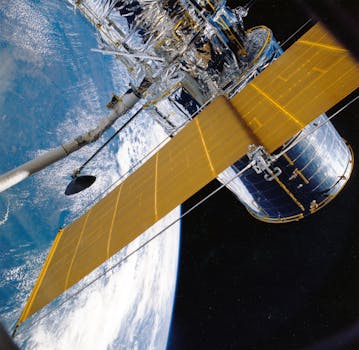The Future of Satellites: Revolutionizing Global Communication and Exploration
The future of satellites holds great promise for advancing global communication, space exploration, and Earth observation. With advancements in technology, satellites are becoming more efficient, cost-effective, and versatile, enabling new applications and services that transform various aspects of our lives.

The Future of Satellites: Revolutionizing Global Communication and Exploration
The future of satellites holds great promise for advancing global communication, space exploration, and Earth observation. With advancements in technology, satellites are becoming more efficient, cost-effective, and versatile, enabling new applications and services that transform various aspects of our lives. The focus keyword, Future of Satellites, is at the forefront of this revolution, driving innovation and pushing the boundaries of what is possible in space.
Advancements in Satellite Technology
Recent years have seen significant advancements in satellite technology, from the development of smaller, more efficient satellites to the use of advanced materials and propulsion systems. These advancements have enabled the creation of satellite constellations, which are networks of satellites that work together to provide global coverage and connectivity. One example of a satellite constellation is the Starlink system, developed by SpaceX, which aims to provide high-speed, low-latency internet connectivity to remote and underserved communities around the world.
Applications of Satellites in Global Communication
Satellites play a critical role in global communication, enabling the transmission of data, voice, and video signals over long distances. With the increasing demand for high-speed internet and mobile connectivity, satellites are becoming an essential part of the global communication infrastructure. Satellites are used in a variety of applications, including broadcasting, telecommunications, and navigational systems. They also provide critical connectivity services for emergency response, disaster recovery, and remote healthcare.
Space Exploration and Earth Observation
Satellites are also used for space exploration and Earth observation, providing valuable insights into the Earth’s climate, weather patterns, and natural resources. Satellites such as Landsat and MODIS have been used to study the Earth’s surface, monitoring changes in land use, deforestation, and ocean health. Satellites have also been used to explore other planets and celestial bodies, such as Mars and Jupiter, providing new insights into the formation and evolution of our solar system.
Conclusion
In conclusion, the future of satellites is bright, with advancements in technology and innovation driving new applications and services that transform various aspects of our lives. As we continue to push the boundaries of what is possible in space, we can expect to see significant advancements in global communication, space exploration, and Earth observation. The Future of Satellites is an exciting and rapidly evolving field, and it will be interesting to see what the future holds for this critical component of our global communication infrastructure.

